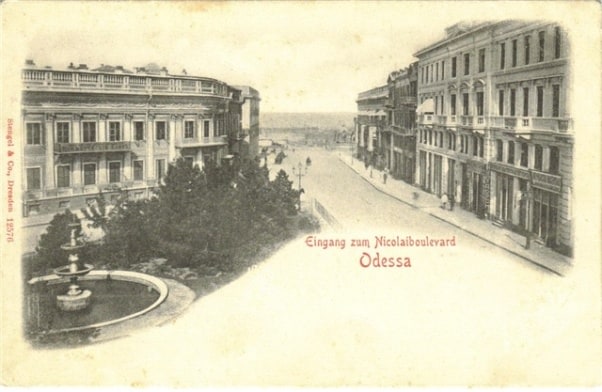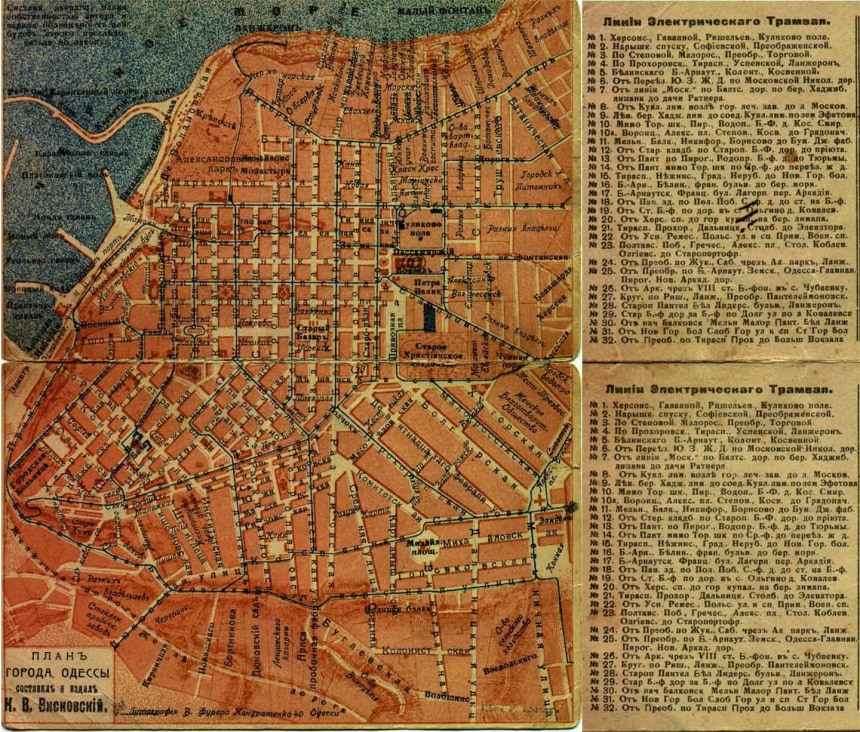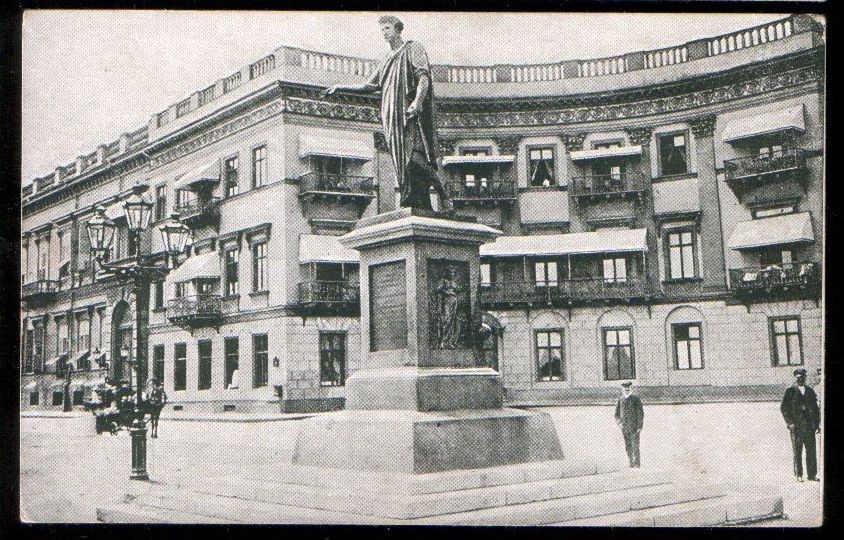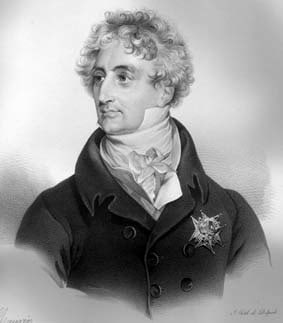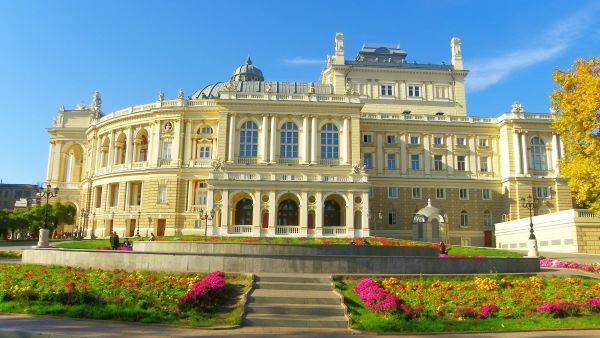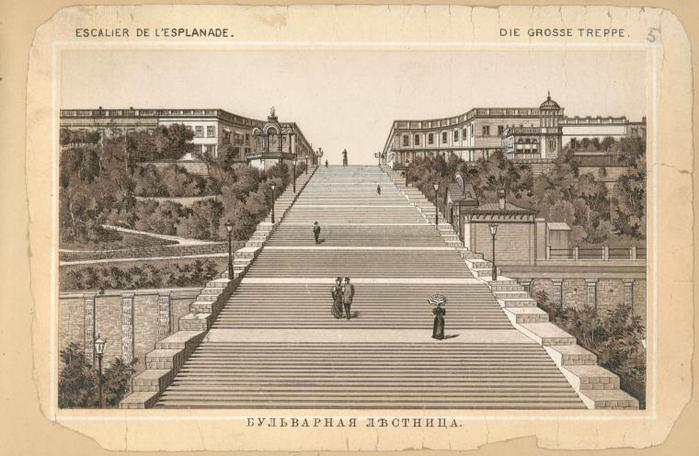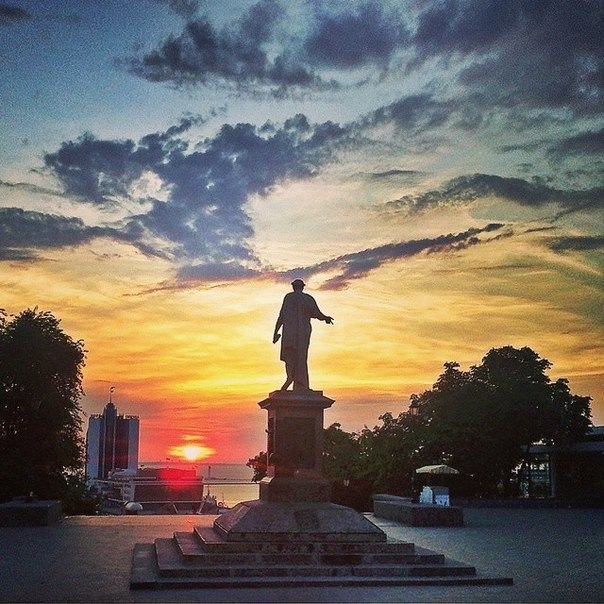
Although a settlement existed on the site in ancient times, the history of modern Odessa city began in the 14th century, when Tatar fortress of Khadzhibey was established there. It later passed to Lithuania-Poland and in 1764 to Turkey. By the 18-th century, the Russian’s influence in the world arena was getting more and more apparent, and Turkey had to take it into consideration. As Russia needed badly the outlet to the sea in order to become an integral part of Europe, Turks built a chain of fortresses along the coast to prevent this outlet. One of the fortresses, Eni-Dunia, was located near the settlement of Khadzhibey. The fortress was stormed by Russians in 1789 and ceded to Russia in 1791; the Black sea coast from the Kerch strait up to the mouth of Danube started belonging Russia. This part of the country was known as Novo-Rossia (New Russia). In fact, this land was something like the Russian southern frontier.
In 1794, the empress Catherine the II issued a decree on a new city foundation in the place of Khadzhibey. In some months, the city was named Odessa.The name is of the Greek origin. The Greek colony named Odessos existed on the Black sea coast in ancient times. Allocations for this construction were huge. Soon the plans, both of the city and theport, were worked out, thus Odessa, like St.Petersburg, was one of few Russian cities built according to a regular plan. It was a grandious plan of simultaneous construction of a city. Really it was a challenge!
The late 18th and early 19th centuries were "golden age" for Odessa city, the peak of its development and richness. These times are connected with the name of one of the founders of the city, Duke de Richelieu. The founders were an enlightened bunch and did a good job of guiding the city. They included Field Marshal Suvorov, Count Potyomkin-Tavriyskiy and a number of notable Russians, including de Ribas, de Volan and Lanzheron. They did such a good job of laying the foundation for the port city that it has become known throughout the world as a gate to large inland empire.
Odessa was allowed to breathe politically because of its advantageous geographical location, convenient sheltered inlet, fertile black soil and eclectic mix of population. Russian Emperor Alexander the I felt the newly won lands in the south needed a progressive administrator.
He chose Duke Arman de Richelieu as governor in 1803. Though a foreigner, Richelieu became a zealous Odessa booster. He went all out to create favorable conditions in Odessa city for development and trade. That included convincing the government to cut tariffs to only a quarter of what they were at other ports. A fifth of the revenue from the money saved on the lower tariffs went toward developing the new city.
The prosperity trickled down to all levels of society, giving Odessa city residents good standard of living. Count Lanzheron, who took over as governor from Duke de Richelieu in 1815, bolstered Odessa's prosperity by convincing Russian government to establish duty-free international trade zone in the city. Good times in the city during that era led to Odessa gaining a reputation as European city.
During the 19th century Odessa's city growth was rapid, especially after the coming of railways in 1866. Odessa became the third city of Russia and Russia's second most important port after St. Petersburg; grain was its principal export. Also Odessa was the third city in empire which obtained rights to build Opera Theatre.
Odessa city was one of the chief centres of Russian Revolution of 1905 and was the scene of the mutiny on the warship Potemkin; Sergey Eisenstein's classic film “Potemkin” was made there in 1925. After this film the stairs (where one of the episodes was shot) got the name "Potemkin stairs". Today it's one of the city symbols.
Odessa's city age - 220 years - makes it a young city for this part of the world. By comparison, Kiev is 1,500 years; Lviv is 759 years old.


